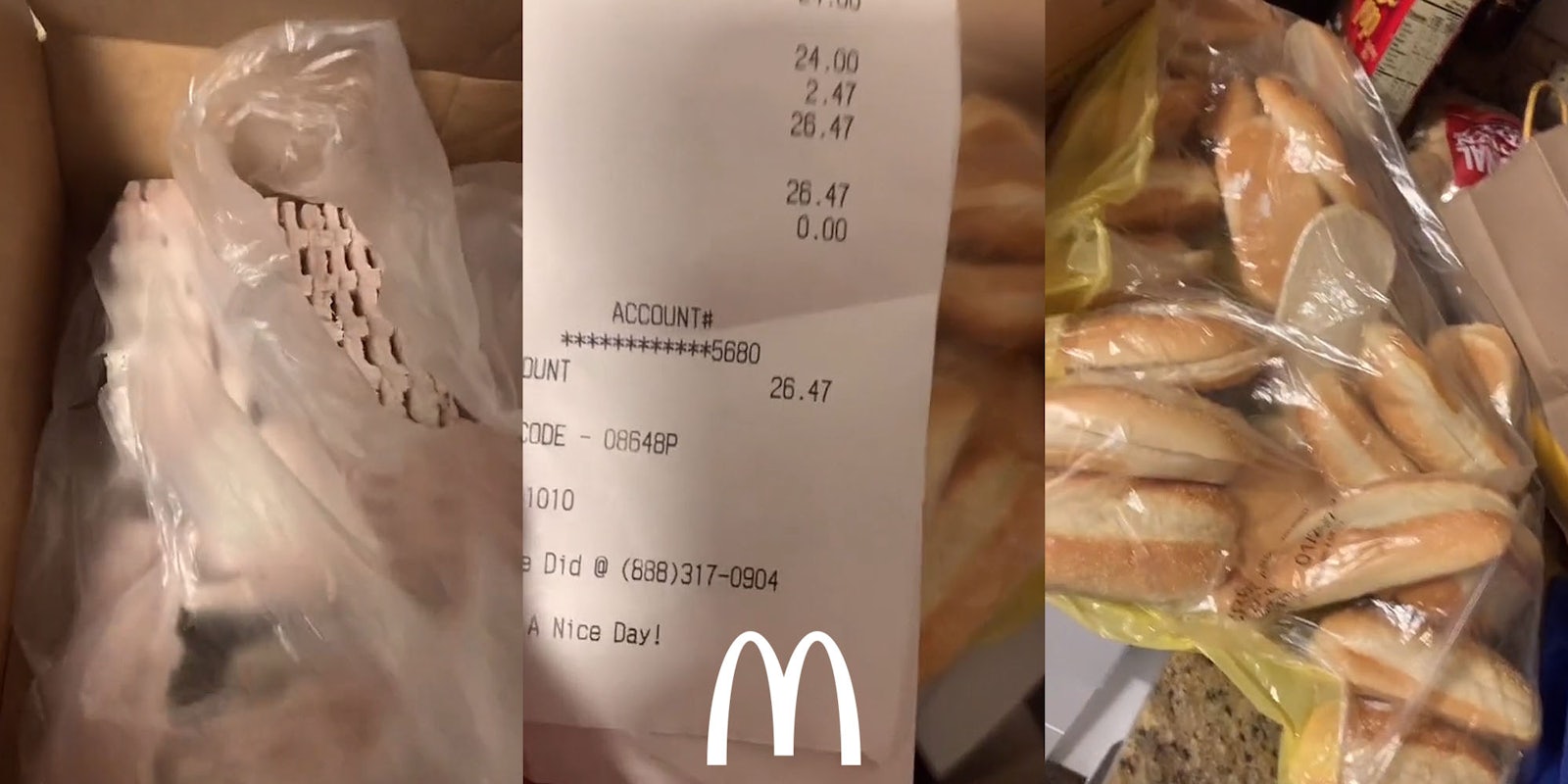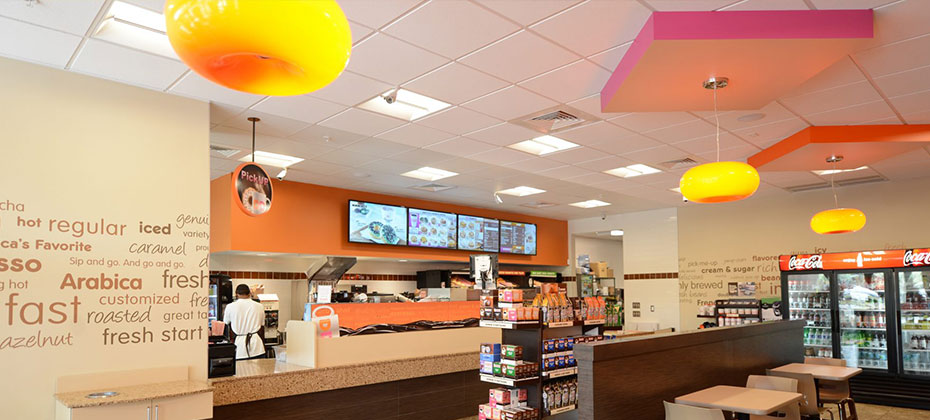Hold onto your coffee cups, Dunkin’ fans, because we’ve got some piping hot tea to spill!
A viral TikTok video is shattering the sweet illusion, revealing that those beloved donuts might not be as fresh as you thought.
From the classic glazed to your favorite jelly-filled, it turns out they’re all starting their journey in the freezer.
The internet is buzzing with reactions—some in shock, some in denial, and others just craving the truth.
Is this the end of our Dunkin’ dreams, or just another day in the world of food industry secrets?
Dive into the juicy details and see how this revelation is turning the donut world upside down!
The Frozen Reality of Dunkin’ Donuts
The Viral TikToks that Started it All

Recently, a series of TikTok videos have pulled back the curtain on Dunkin’ Donuts, revealing some less-than-appetizing truths.
Sophia Fischett, a Dunkin’ employee, accidentally exposed that the donuts are frozen and not freshly baked as many customers believed.
In her viral video, she showed herself taking frozen donuts out of a freezer, lining them up on racks, and baking them before decorating.
Fischett’s video sparked outrage among Dunkin’ enthusiasts.
Comments flooded in, expressing shock and disappointment.
One user wrote, “Hold up, you’re telling me the donuts in the morning aren’t fresh-made?”
Another exclaimed, “The donuts are FROZEN?! My life has been a lie.”
The sentiment was clear: many felt deceived by the brand they trusted for fresh baked goods.
Similarly, another TikToker, Sav (@possiblysav), revealed that not only donuts but also eggs, bagels, and munchkins come in frozen.
This further fueled the controversy, leading to a heated discussion about Dunkin’s practices and the quality of its products.

Sav’s Insider Information
Sav shared more in-depth details about the frozen products at Dunkin’.
She explained that deliveries of these items typically arrive around 2 or 3 am from a bakery located 30 to 40 minutes away.
This means that the donuts you get at 6 am are the same ones you get later in the day, potentially compromising freshness.
She also revealed some less appetizing practices.
For example, the cold brews are stored in plastic containers that aren’t always changed out between batches.
This can lead to a mix of flavors, with tea and coffee often getting mixed.
Additionally, food can be left out for hours in hot trays, leading to unappealing results.
Sav shared a specific incident where sliced ham was left in a hot tray for 12 hours, resulting in a brownish tint.
She emphasized that such lapses in food handling were not uncommon, pointing to systemic issues within the franchise.
Behind the Scenes: The Preparation Process
The Logistics of Donut Delivery

The logistics behind Dunkin’s donut delivery are surprisingly complex.
Each store receives its donuts from a central bakery, with deliveries often happening in the early morning hours.
This centralization is meant to ensure consistency across franchises but can affect the perceived freshness of the product.
These early morning deliveries mean that staff must be ready to receive, thaw, and bake these items before the store opens.
The process is labor-intensive and time-sensitive, with employees like Sophia starting their day well before dawn to prepare the donuts and other baked goods.
While this method allows Dunkin’ to manage large volumes efficiently, it raises questions about the freshness and quality that customers expect from a bakery-branded chain.
Thawing and Baking
Once the frozen items are delivered, the next step is thawing and baking.
Employees must remove the frozen donuts, bagels, and other items from the freezer and arrange them on trays.
This process typically takes several hours, with thawing and baking time included.
During this period, the items are spritzed with water and placed in ovens to bake.
After baking, the donuts are then decorated and prepared for display.
This entire process is necessary to meet the demands of morning rushes but compromises the “freshly baked” image that Dunkin’ portrays.
The thawing and baking process, while effective for operational efficiency, can lead to a noticeable difference in taste and texture.
This has been a point of contention among customers who expect a fresh product.

Food Safety and Hygiene Concerns
Hygiene Practices in Dunkin’ Locations
Hygiene practices at Dunkin’ locations have also come under scrutiny.
Sav highlighted several concerning practices, such as food being left in hot trays for extended periods and the improper cleaning of beverage containers.
These practices raise significant food safety concerns.
Sav recounted instances where iced teas and cold brews were stored in the same containers without proper cleaning in between.
This could result in cross-contamination and a less-than-pleasant taste experience for customers.
Additionally, she pointed out that hot trays used to keep food warm are not always cleaned regularly, leading to potential food safety hazards.
One particularly alarming example she shared was a photo of ham left in a hot tray for 12 hours, developing a brownish tint.
Such negligence underscores the need for better hygiene practices and oversight within Dunkin’ locations.
The Coolatta Machine Issue

Another significant concern is the cleanliness of the Coolatta machines.
Sav urged customers to avoid Coolattas, explaining that the machines are rarely cleaned.
She mentioned that the one time she saw a Coolatta machine being cleaned, it was riddled with mold, highlighting severe hygiene issues.
These revelations are particularly troubling considering the popularity of Coolattas.
The potential for mold and cross-contamination between flavors poses health risks to consumers.
Sav’s advice to avoid these drinks underscores the need for more stringent cleaning protocols.
This issue is not isolated to one location; it reflects a broader problem within the franchise.
Regular maintenance and thorough cleaning are essential to ensure the safety and quality of the products served to customers.
Consumer Reactions and Expectations
Public Response to the Revelations

The public response to these revelations has been overwhelmingly negative.
Social media platforms were flooded with comments from shocked and disappointed customers.
Many felt deceived, believing that the donuts they enjoyed were freshly made in-store each day.
These revelations have undoubtedly damaged Dunkin’s reputation.
The trust that customers place in the brand has been shaken, and many are now questioning whether they should continue to support a chain that does not meet their expectations for freshness and quality.
Adjusted Expectations
As a result of these revelations, many consumers have adjusted their expectations when it comes to Dunkin’ products.
The knowledge that donuts are not freshly made but rather frozen and reheated has led to a shift in how customers perceive the brand.
Some customers have decided to seek alternatives, opting for local bakeries or other chains that offer freshly made products.
Others have chosen to lower their expectations, accepting that the convenience of Dunkin’ comes at the cost of freshness.
Ultimately, these adjusted expectations could lead to a change in customer behavior and purchasing patterns.
Dunkin’ may need to address these concerns directly to regain the trust and loyalty of its customer base.
Comparison with Other Fast Food Chains
The Frozen Food Trend in Fast Food

The use of frozen foods is not unique to Dunkin’.
Many fast food chains rely on frozen products to meet high demand and maintain consistency.
This trend is driven by the need for efficiency and cost-effectiveness in large-scale operations.
For example, McDonald’s also uses frozen eggs for their breakfasts.
An employee revealed that the folded eggs come pre-cooked and are simply reheated before serving.
This practice, while efficient, has similar implications for freshness and quality.
Customers have expressed similar frustrations with other chains, indicating that this is a broader industry issue.
The reliance on frozen products highlights the challenges of maintaining quality while managing large volumes and ensuring quick service.
Dunkin’ vs. McDonald’s
When comparing Dunkin’ to McDonald’s, it becomes clear that both chains prioritize efficiency over freshness.
McDonald’s use of pre-cooked, frozen eggs is a direct parallel to Dunkin’s use of frozen donuts and other baked goods.
This comparison underscores a common practice in the fast food industry: the trade-off between operational efficiency and product quality.
While these practices allow chains to serve large numbers of customers quickly, they often come at the cost of freshness and taste.
For consumers, this means adjusting expectations and making informed choices about where to dine based on their preferences for quality versus convenience.
Quality vs. Convenience: The Big Debate
The Trade-Offs of Frozen Foods
The use of frozen foods presents significant trade-offs.
While it allows chains like Dunkin’ to manage high demand and maintain consistency across locations, it also impacts the taste and texture of the products.
Freezing can lead to moisture loss and freezer burn, which negatively affects flavor and quality.
Experts agree that some foods suffer more from freezing than others, and baked goods are particularly susceptible to these changes.
For customers, this means that the convenience of getting a quick bite at Dunkin’ comes with the understanding that the product may not be as fresh as they would like.
This trade-off is a key factor in the ongoing debate about the use of frozen foods in the fast food industry.
Operational Efficiency
From an operational perspective, the use of frozen products is highly efficient.
It allows Dunkin’ to streamline its supply chain, reduce waste, and ensure that all locations can offer the same menu items consistently.
This efficiency is critical for large chains that serve millions of customers daily.
By centralizing production and using frozen products, Dunkin’ can control costs and maintain a reliable supply of baked goods.
However, this efficiency comes at a cost.
The loss of freshness and potential quality issues are significant drawbacks that affect customer satisfaction.
Balancing efficiency with quality is a challenge that Dunkin’ and other fast food chains continue to face.
Dunkin’s Response and Future Prospects
Dunkin’s Official Stance

In response to the viral videos and public outcry, Dunkin’ has made efforts to address customer concerns.
The company has acknowledged the use of frozen products and explained that this practice is necessary to meet high demand and ensure consistency.
While Dunkin’ has not announced any major changes to its preparation process, it has emphasized its commitment to food safety and quality.
The company has reassured customers that it follows strict guidelines to ensure that all products are safe and enjoyable.
Despite these assurances, many customers remain skeptical.
The revelations have highlighted a disconnect between customer expectations and the realities of fast food operations, posing a challenge for Dunkin’ as it works to rebuild trust.
Future Changes
Looking ahead, Dunkin’ may need to consider changes to address the concerns raised by these revelations.
This could include more transparency about its preparation processes, improved hygiene practices, and potentially offering more freshly made options.
Implementing such changes would require significant investment and operational adjustments.
However, they could help restore customer confidence and differentiate Dunkin’ from competitors in the crowded fast food market.
As consumer preferences continue to evolve, Dunkin’ will need to stay attuned to customer feedback and be willing to adapt.
By prioritizing quality and transparency, the brand can work to regain its reputation as a trusted provider of delicious baked goods.
Practical Tips for Consumers
What to Order and What to Avoid

For those who still enjoy Dunkin’ products, there are ways to make the most of your visit.
Sav offers some insider tips to help customers get the best experience.
She advises against ordering Coolattas due to the cleanliness issues with the machines.
If you’re looking to lower your caffeine intake, Sav recommends asking for a fresh pot of decaf coffee.
Typically, decaf coffee is left sitting for hours, resulting in a burnt taste.
Requesting a fresh pot ensures a better-tasting cup.
Additionally, be mindful of items that are more likely to be affected by the frozen preparation process.
Opting for items that are known to be freshly made or less susceptible to quality issues can enhance your Dunkin’ experience.
Insider Tips for Better Service

Getting the best service at Dunkin’ often comes down to timing and specific requests.
Visiting during off-peak hours can increase the likelihood of getting fresher items, as staff have more time to focus on preparation.
When ordering, don’t hesitate to ask questions about how items are prepared.
Staff are usually willing to provide information and accommodate special requests, such as making a fresh batch of coffee or ensuring your donut is properly warmed.
Being informed and proactive about your order can significantly improve your experience at Dunkin’.
These small steps can help you navigate the complexities of fast food preparation and enjoy your favorite treats with confidence.
Conclusion
In summary, the revelations about Dunkin’ Donuts’ use of frozen products have sparked widespread debate and concern.
While these practices are common in the fast food industry, they highlight important issues around food quality, safety, and transparency.
As consumers, it’s essential to be aware of these practices and make informed choices about where we spend our money.
By understanding the trade-offs between convenience and quality, we can better navigate the fast food landscape and enjoy our favorite treats without compromising on our standards.
Ultimately, the responsibility lies with both consumers and companies like Dunkin’ to prioritize transparency and quality.
By working together, we can ensure that our food choices align with our expectations and values.


